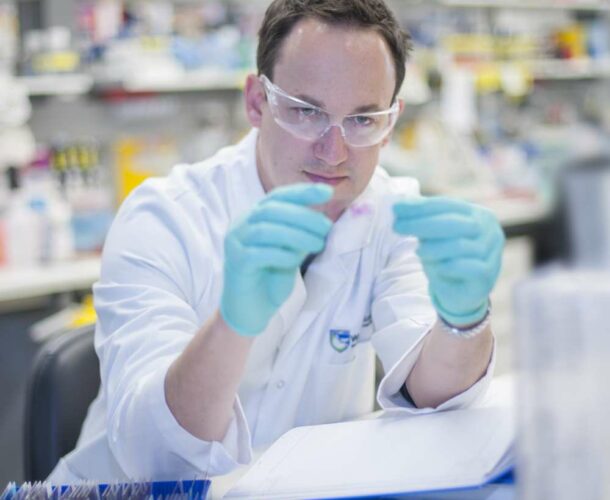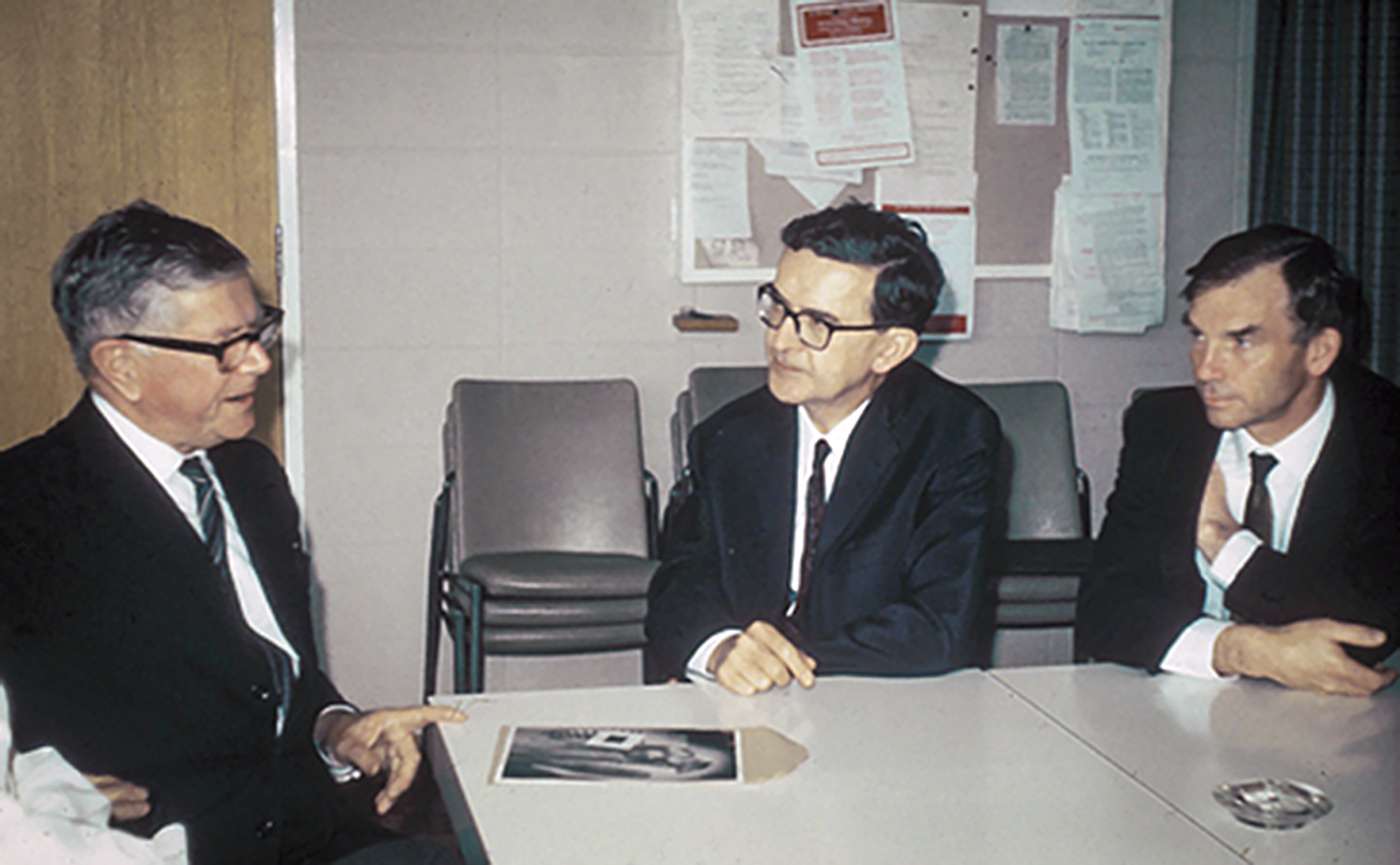Dr Simon Willis’ first encounter with the Walter and Eliza Hall Institute was as a teenager in the early 1990s, when his schoolteacher father brought him to Parkville from suburban Keilor to attend an open day.
A keen science student, he recalls “sitting through a couple of hours listening to what scientists did, and I thought it was fascinating. And I thought it was very noble, the idea of creating new therapies for people. It’s still a driver in my mind.”
Powerful – and personal – motivation
What he could never have anticipated was how personal and powerful that motivation would become.
After obtaining a science degree from the University of Melbourne, Willis began a PhD at the institute with Professors Jerry Adams and David Huang.
Around this time his partner Melanie – also a medical scientist – was diagnosed with multiple sclerosis (MS) at the age of 25. When Willis finished his PhD in 2005, he resolved to shift his focus from cancer research to MS.
The couple travelled to the US, where Willis took up a coveted position at the Harvard Medical School working with Dr David Hafler, a renowned authority on the mechanism of autoimmunity generally and a big name in MS research. “I spent the next four years chasing causes. That’s what drives me.”
Multiple sclerosis is a debilitating, chronic neurological condition. It is estimated that 23,000 Australians are living with MS, most of them diagnosed between aged 15 and 45 years. Clinically, it is an inflammatory disease of the central nervous system that is characterised by damage to the insulating layer surrounding nerve fibers.
Finding the cause of MS
MS is believed to be caused by the body’s own immune system. The trigger remains a mystery, though many suspect it is an infectious agent.
“I spent four years (at Harvard) chasing the cause, trying to exhaust as many possibilities as I could,” Willis says. “I came to the conclusion that whatever I’m looking for was possibly a modified human protein or something foreign – bacterial or viral.”
In 2010, Willis returned to Melbourne and the Walter and Eliza Hall Institute to work with Professor Stephen Nutt. With project funding support from the original benefactors of the institute, the Walter and Eliza Hall Trust, Willis has embarked on another phase of his quest. His work is enlisting the institute’s expertise in breakthrough bioinformatics technologies to understand how lesions form in the brain of MS patients, which are believed to contribute to physical disability.
More specifically, Willis and his colleagues are attempting to define the transcriptional changes associated with lesion formation and to search bacterial and viral sequences that may contribute to the disease development. This required them to sift through the entire archive of known bacterial and viral sequences looking for the MS trigger. “I’m looking for something foreign that shouldn’t be there,” Willis says.
Scrutinising the suspects
Willis worked with the institute’s bioinformatics teams to develop algorithms to facilitate the search, to sift through all that data. “The strength of the Walter and Eliza Hall Institute is that people can work together. That has always been its strength, the power of pooled resources.
I have very personal motivations doing this. I said to the bioinformatics specialists ‘I’m looking for something, and I don’t know what it is. But I can tell you what I think it looks like, and help you in defining the parameters to begin the search’. They love the challenge, so it becomes very much a collective effort.
So far the investigation has been running for a year and a half, and it is continuing. Willis hopes he won’t have to be patient too much longer before he can examine what the search has hauled in. That moment will begin another phase scrutinising the suspects to identify the culprit. Meanwhile he’s keeping busy trying to understand “the expression, the landscape, of an active lesion – what’s actually happening there to all the human genes”.
“MS remains a condition with no known cause or cure,” Willis says. “Identifying what causes MS is of the utmost importance for new diagnostics, better treatment options and even possibly a vaccine that prevents the disease developing.
“The holy grail is to find the cause. Most people can see that this is high-risk science. And they can see the chance of an enormous benefit if we find something. That’s what we’re hoping for.”




